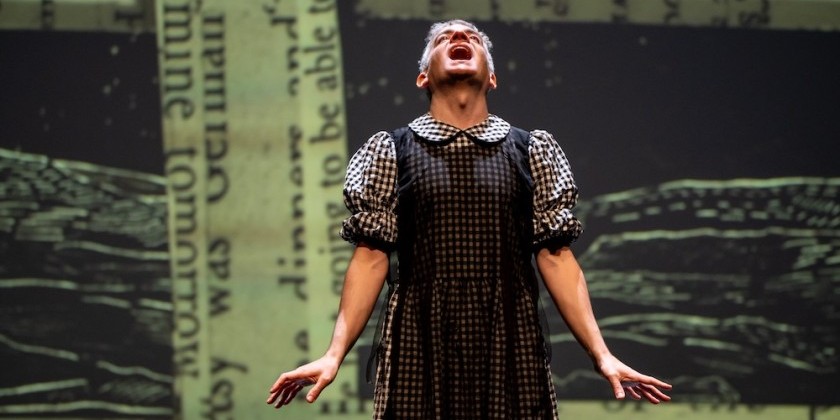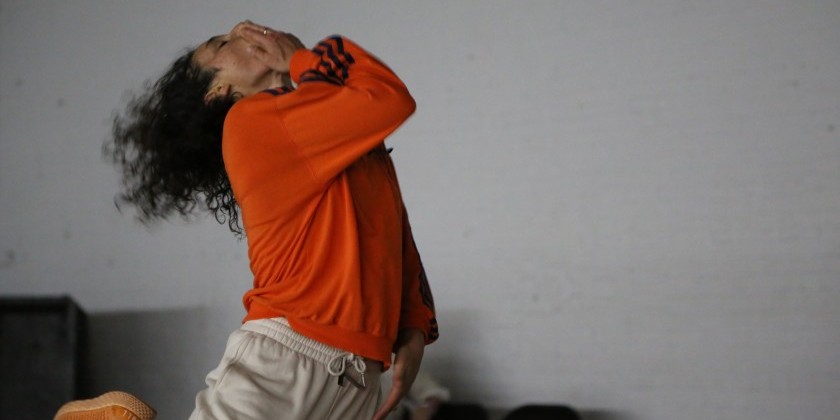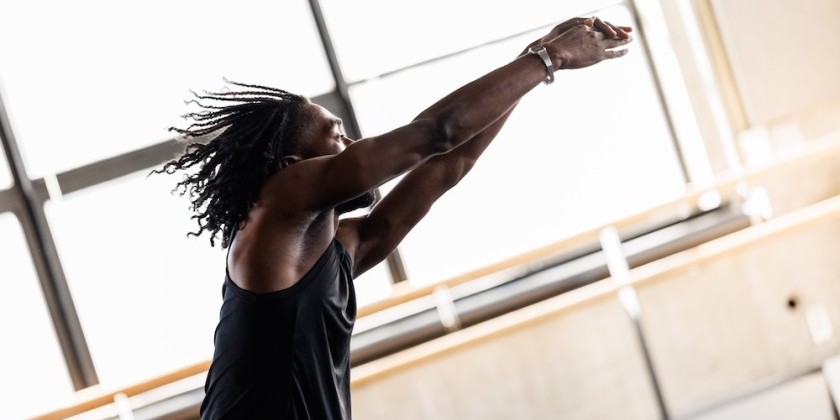IMPRESSIONS: Martha Friedman and Susan Marshall's "Two Person Operating System Type 2" at The Kitchen
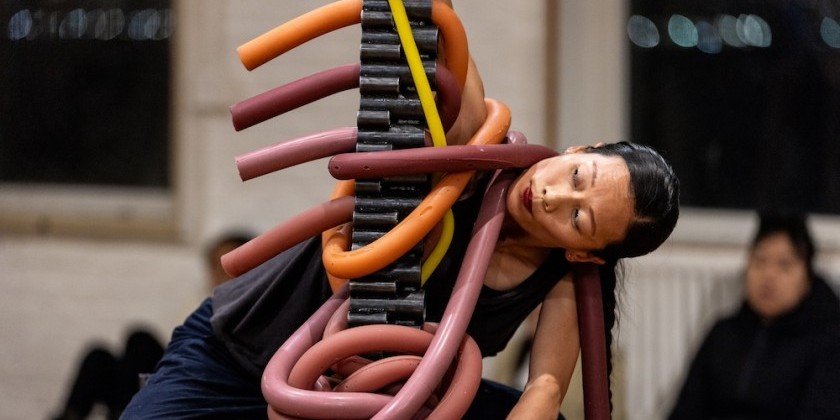
A collaboration between artist Martha Friedman and choreographer Susan Marshall
With collaborating dancers Ching-I Chang, Miriam Gabriel, Paul Hamilton, and Luke Miller (Assistant Choreographer)
Organized by Matthew Lyons, Curator, with Angelique Rosales Salgado, Curatorial Assistant
Production by David Riley, Production & Exhibitions Manager, and Tassja Walker, Production Supervisor
Sound Design by Dan Trueman
Audio Tech by Max Ludlow
Sculptor Martha Friedman and choreographer Susan Marshall's performance-installation Two Person Operating System Type 2 is, in a word, curious. Curious in its articulate yet cryptic exchanges between bodies and objects, curious in the spareness and complexity of its presentation, and curious in the exploratory sense—each artist seems deeply interested in the vocabulary, materials, and expressive potential of the other’s medium. This mutual investigation results in a densely entangled work with a clarity of surface that belies its shifting depths. Shapes and movements reference those of telephone switchboard operators, yet Friedman and Marshall’s rendition of mechanized labor gives rise to a paradigm of its own.
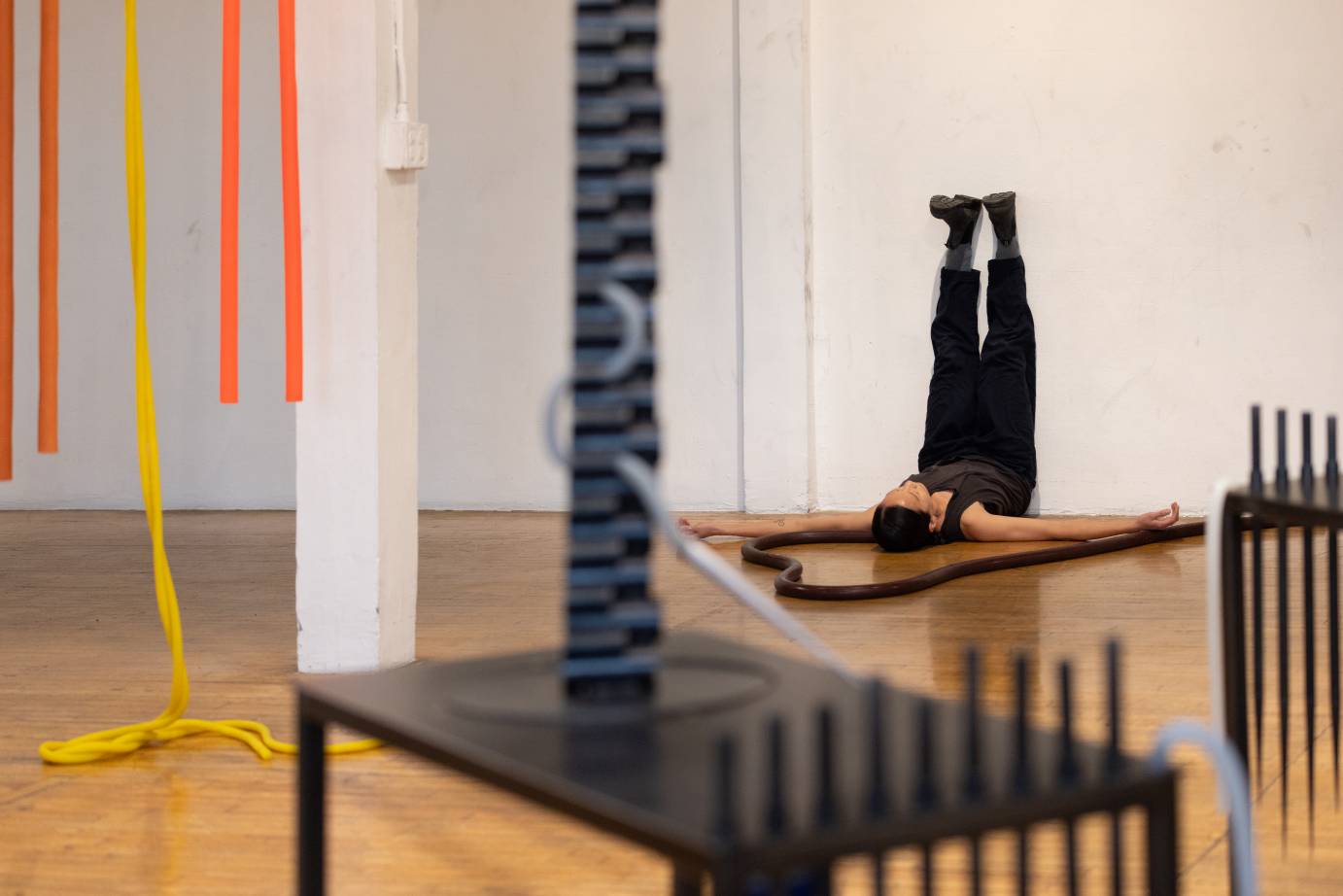
Even before the performers activate the space, these elements have begun their subtle interpenetrations. A short, tendinous rope snakes through the cylinders of one tower in a neatly symmetrical s-curve. It and a few longer ropes end in talon-like outgrowths of spikes; they hang still and straight as plumblines while their compatriots loll and wobble in the slight ambient breeze. Together their forms and materialities speak of contrasts: weight and lightness, solidity and penetrability, mobility and fixity.
The four performers enter the space covertly, mixed in with the milling crowd in simple attire. While perhaps intentionally depersonalized, something of each of them remains in the physiological idiosyncrasies of their gaits and gazes, their statures and postures. They place themselves around the perimeter, flopped against walls or wrapped around columns, morphing shape slowly and heavily as the sculptural field’s gravity draws them inexorably toward center. Bodies and objects collide as hands spin towers, grasp spikes, and slide them through cylinders with a clinical clink. Spikes flash as they spin. Ropes thump meatily against the ground. Elements at first methodically isolated build to an overlapping yet unfrenzied density of action and sound as objects and bodies merge into a single performing unit.
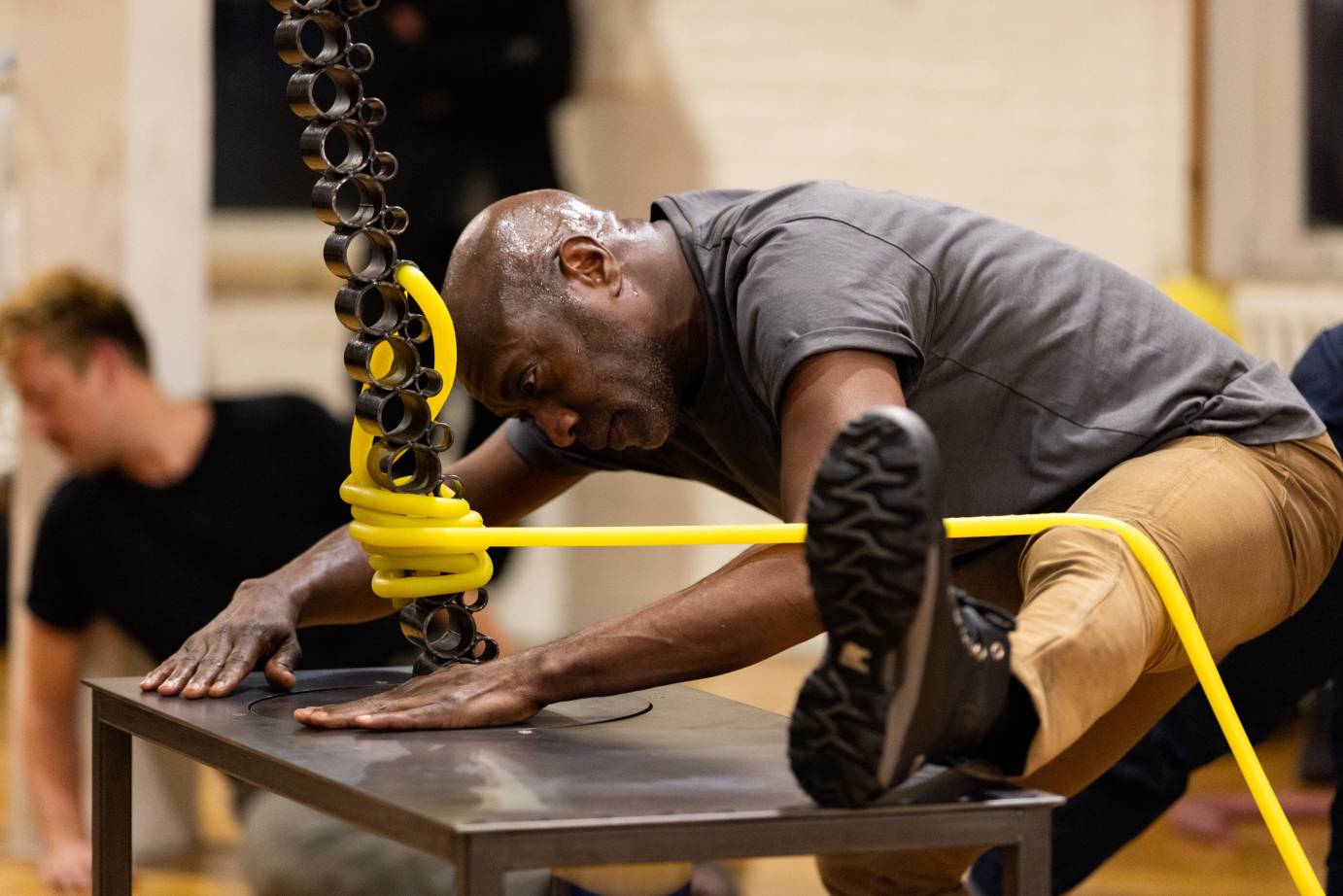
Throughout, a rumbling industrial soundscape lends appropriate atmosphere while allowing the rhythms of performers and sounds of materials to dominate the aural sphere. The chilling metal-on-metal ring of a spike’s tip along a table sharpens the air while the purposeful thuds of booted footfalls ground the bass register. Together they form the cadence of a living machine in which repetition and interruption shape structures, symmetries, and synchronicities; only the objective remains unknown.
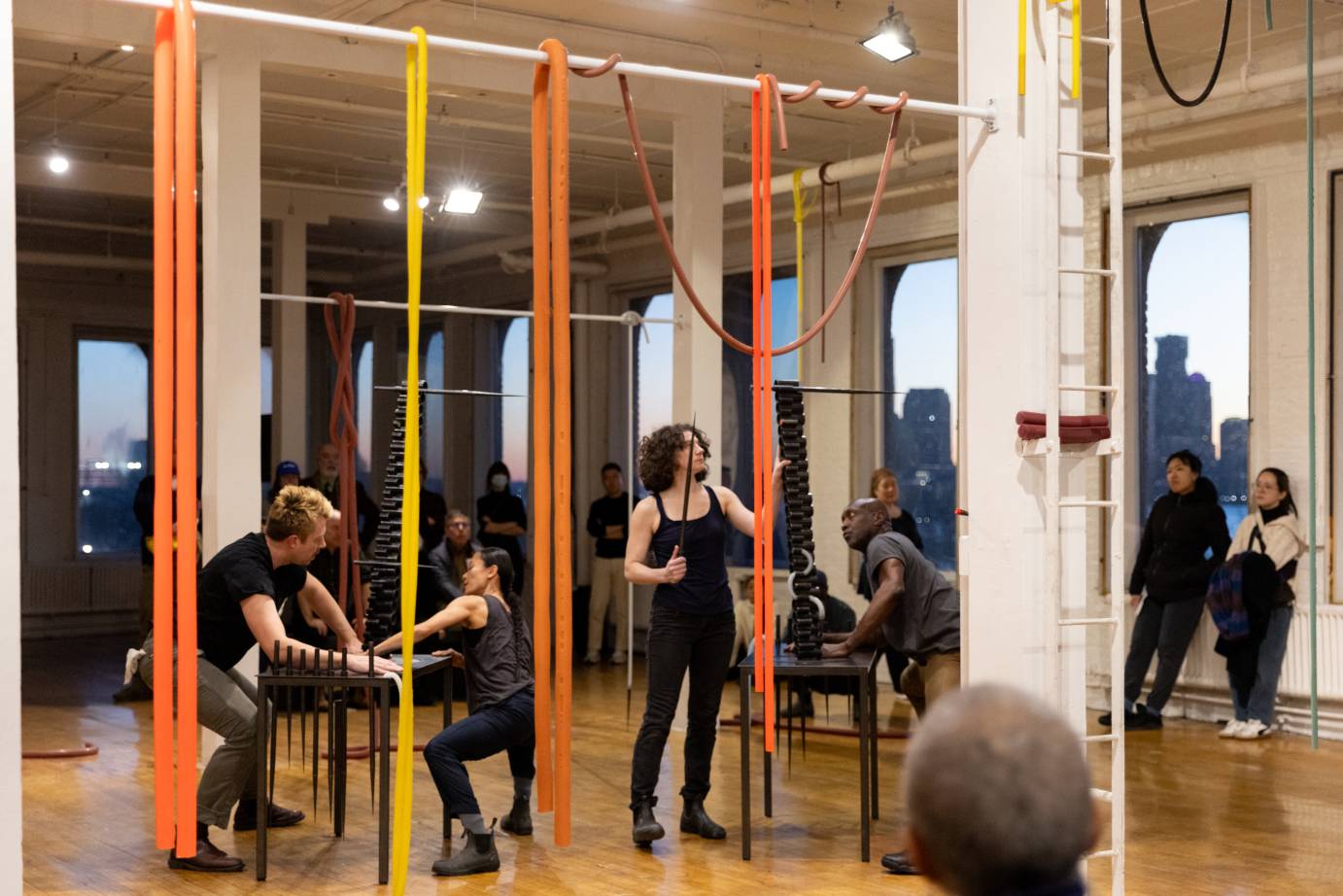
Luke Miller, Ching-I Chang, Miriam Gabriel and Paul Hamilton; photo by Maria Baranova
The tenor of Marshall’s movement vocabulary treads between workaday, task-like focus and precise, choreographed shape and gesture. Deep, shifting lunges impart a sinuous muscularity while also keeping heads low enough to miss the whirling spikes. The tips of ropes are daubed with Vaseline prior to insertion (a viscerally familiar sensation), the magnetized tub then grasped and replaced with a decisive thrust against the underside of the table. A particular maneuver carries the performers’ legs aloft behind them, their rigid torsos pressed against the table. Occasionally one or another leaves their task to thud solidly to the floor, lean against a wall, or fold around a column.
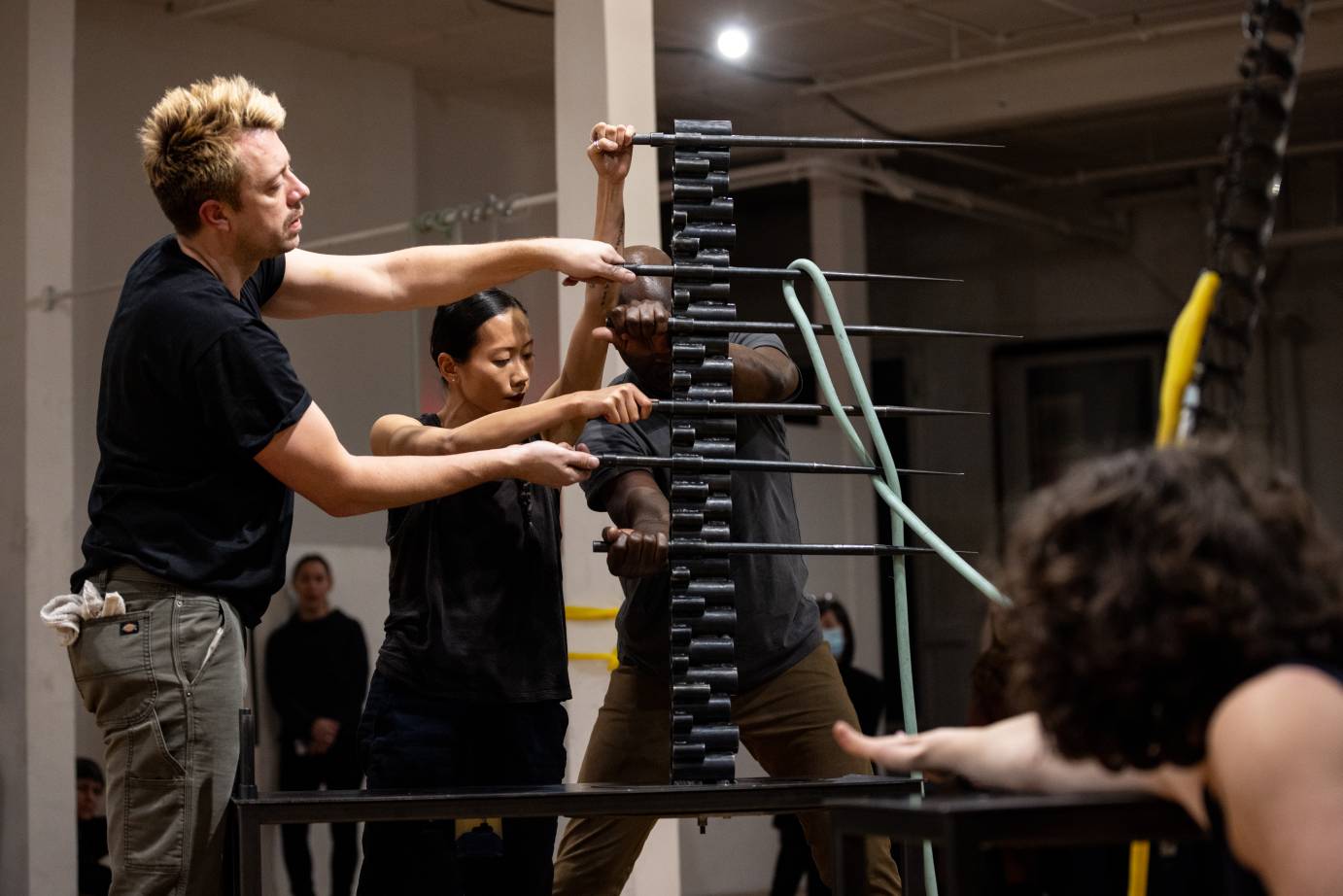
Guided by exacting directives and material realities, Marshall troubles the aesthetically-contrived line between task and dance, blurring the distinction or erasing it entirely. Towers are spun arm over arm, steered in turn by the palm, the back of the hand, the turning facets of the forearm. Multiple spikes repeatedly inserted and reinserted travel down the tower, forcing bodies to accommodate its increasingly bristling revolutions. A long yellow rope is slowly wound around a tower’s base; a performer pulls its end to set the tower spinning at breakneck speed. The kinetic chain is complete — metal, rubber, flesh.
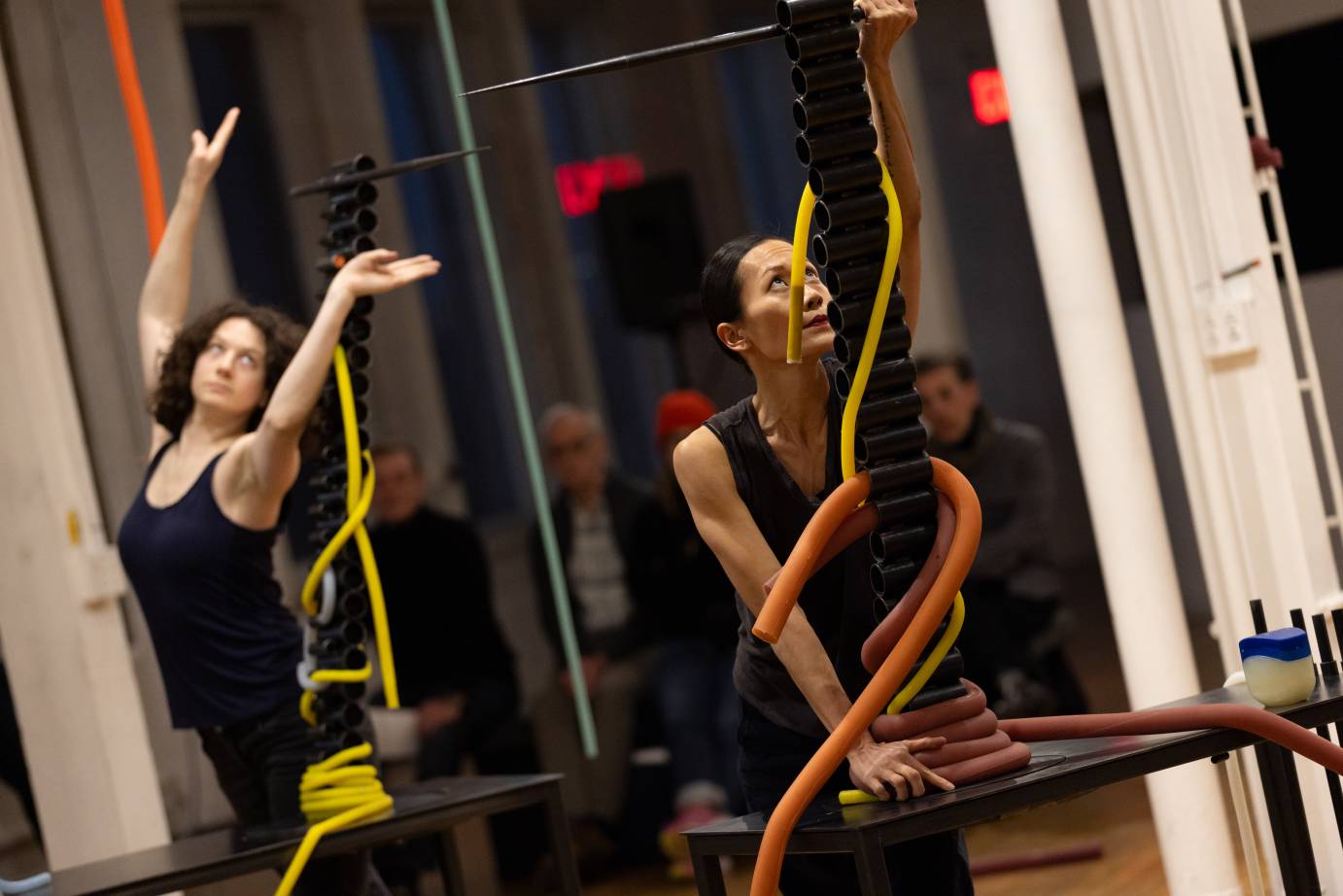
Miriam Gabriel and Ching-I Chang; photo byMaria Baranova
Actions and materials pile on to reach a fever pitch: a chaotic tangle of ropes impedes a tower’s smooth spinning, bodies interfere with bodies in a heavily elastic, grasping dance. The task remains the same, only made more difficult by accumulation. The human-machine continuum has overloaded its circuits. Its purpose crumbles in the face of unintelligibility — its gears stopped up, its logics tied in knots. There’s nothing left to do but walk away. The performers disperse, yet the metal-and-rubber tangle remains: a vestige of their labor left senseless and inert in their absence. With this final quiet gesture, the machine's tragic permanence reveals the beauty of our fundamentally human impermanence.




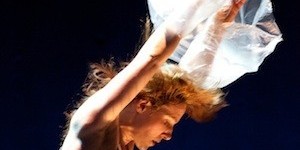
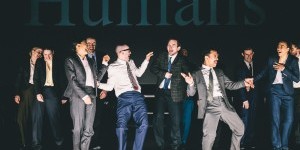

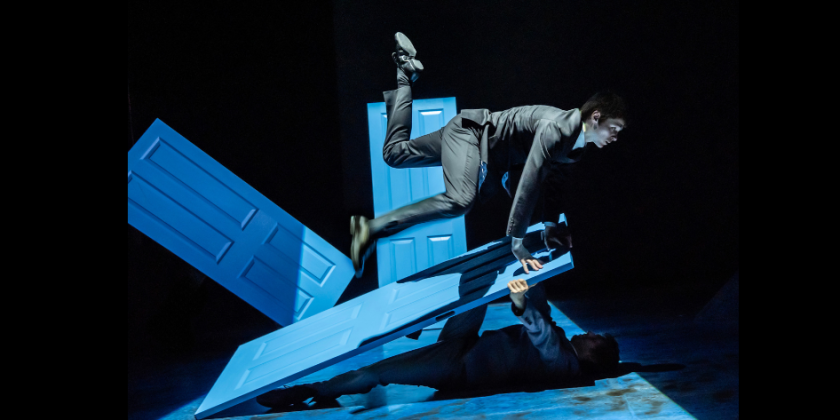
![IMPRESSIONS: Will Rawls' [siccer] at the Keith Haring Theatre, Performance Space New York](/images/features_large/20251119_WillRawls_siccer_PerformanceSpaceNY_WhitneyBrowne--55.jpg)
